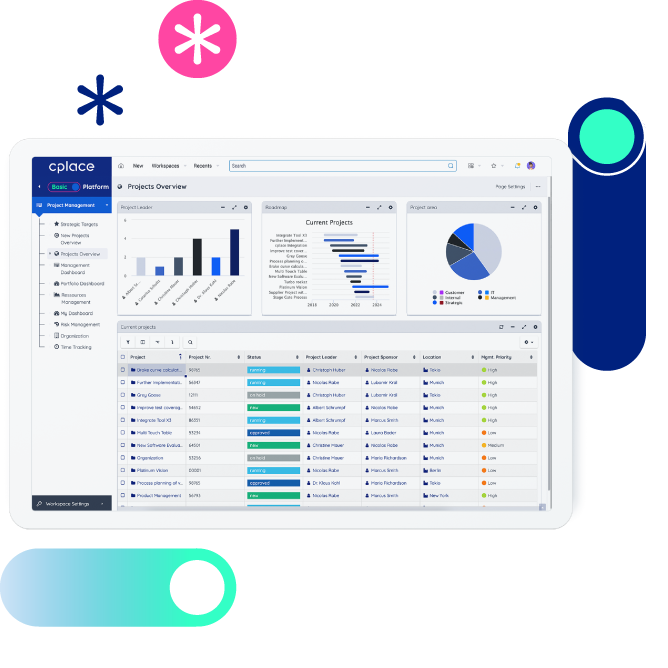Collaborative Project Management

What Is Collaborative Project Management?
Collaborative project management is a method for efficiently planning, coordinating and controlling complex cross-location projects. An essential feature of collaborative project management is decentralisation. Unlike in classical project management, project teams work together across the boundaries of departments, companies and countries. This makes it possible to respond to the ever-increasing complexity of projects and tasks. Collaborative project management is mainly used in production and software development.
Origin of collaborative project management
Collaborative project management was invented by Dr Rupert Stuffer, who first applied this method in the automotive industry. Very soon, its practicality and added value were proven, so that collaborative project management is now the industry standard for German car manufacturers.
The basis of collaborative project management
In collaborative project management, all project participants are networked and constantly involved in the planning and control process. This means a high level of personal responsibility for the employees.
Implementation of collaborative project management
The project management subdivides complex projects into sub-areas and hands them over to those responsible in the corresponding departments and/ or locations. This is also where the responsibility for the further management, coordination and control of the respective sub-area lies. Milestones and key dates are defined “top-down”. However, the employees of the individual areas then assume their project responsibility as autonomously as possible. This means they network with other project areas as needed and report the current status or completion of a task “button-up”.
Prerequisite for collaborative project management:
- Central database with access for all project participants
- Good communication structures
- Clearly assigned responsibilities
What are the advantages of collaborative project management?
- Multi-perspective viewpoint
- Efficiency
- Transparency
- Creation and use of synergy effects
- Quality assurance
- Quality awareness of the contributors
- Cross-location community spirit
- Interdisciplinary cooperation
- Mastering ever more complex product development
- Rapid identification of problems and faults
- Information exchange in real time
What are the disadvantages of collaborative project management?
- Possible misunderstandings with digital-only communication
- Sensitive data can be lost if handled carelessly
- Previously established ways of working are questioned and changed
- Strong reliance on technical infrastructure
Related terms: Collaboration, Complexity, Hybrid Project Management
